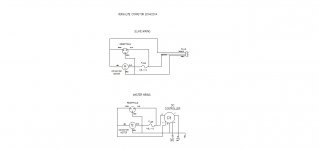SeymourDumore
Diamond
- Joined
- Aug 2, 2005
- Location
- CT
Guys, I know this is a "machining" forum, but will try my luck anyway.
I am rebuilding a machine ( mechanical press ) from absolute scratch electrically and installing all new.
I know exactly what to do, so will not need any "smart" electrical CAD software to simulate or test my stuff.
All I want to do is a simple way to draw my schematics.
I can draw them on paper ( did a few hundred in my school days ) but don't want to go there ever again.
I also am an Autodesk PDSU subscriber, so I do have AutoCAD electrial, but it is the most cumbersome piece of wannabe software
that was kludged together on top of an otherwise awesome 2D platform.
I have Microsoft Visio as well, but that's more of an artsy-fartsy connect the dots thing.
Basically what I'd like to do is place my components ( relays, switches, terminals etc ) on the page, click the connection points and have the software
simply draw the lines as it's normally shown on most electrical drawing printouts with the lines drawn at 90 degrees.
Again, it doesn't need to know what is connected to what and why, just keep the lines as a single entity, I can add connection points, add numbering and all others manually.
I am not necessarily looking for freeware, don't mind plunking down a few hundred bucks for a decent schematic drawing tool.
Is there something out there for a reasonable price?
Thank You
I am rebuilding a machine ( mechanical press ) from absolute scratch electrically and installing all new.
I know exactly what to do, so will not need any "smart" electrical CAD software to simulate or test my stuff.
All I want to do is a simple way to draw my schematics.
I can draw them on paper ( did a few hundred in my school days ) but don't want to go there ever again.
I also am an Autodesk PDSU subscriber, so I do have AutoCAD electrial, but it is the most cumbersome piece of wannabe software
that was kludged together on top of an otherwise awesome 2D platform.
I have Microsoft Visio as well, but that's more of an artsy-fartsy connect the dots thing.
Basically what I'd like to do is place my components ( relays, switches, terminals etc ) on the page, click the connection points and have the software
simply draw the lines as it's normally shown on most electrical drawing printouts with the lines drawn at 90 degrees.
Again, it doesn't need to know what is connected to what and why, just keep the lines as a single entity, I can add connection points, add numbering and all others manually.
I am not necessarily looking for freeware, don't mind plunking down a few hundred bucks for a decent schematic drawing tool.
Is there something out there for a reasonable price?
Thank You



